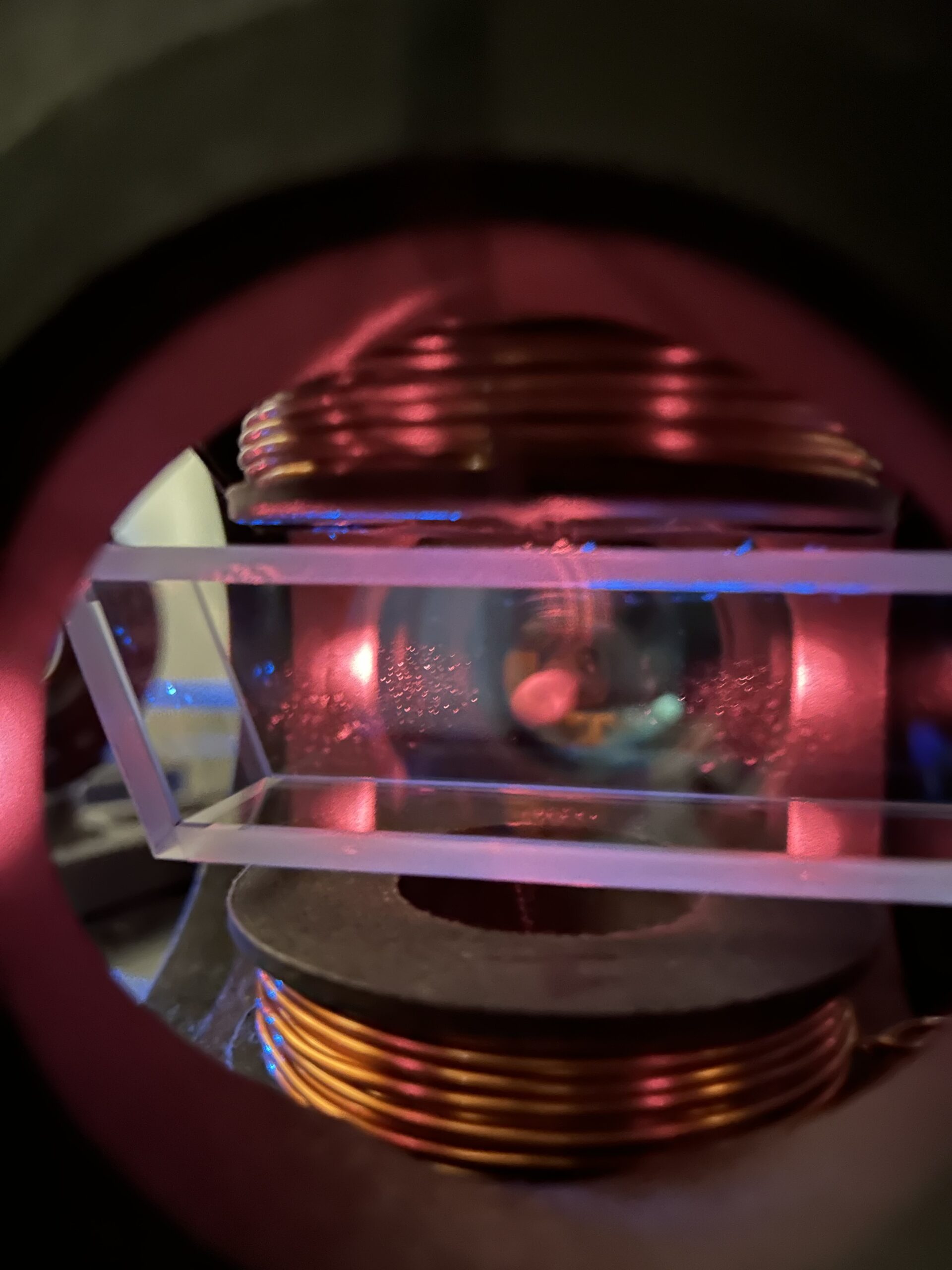
CARAMELS
Electromagnetic field sensors with hot and cold Rydberg atoms
Project managers
Sylvain Schwartz, ONERA
Overview
The aim of the CARAMELS project is to create a national consortium to push the limits of existing Rydberg sensors beyond the state of the art, and to develop new applications.
Keywords: Quantum sensors, Rydberg atoms, vapor cells, cold atoms, electromagnetic field sensors
In a nutshell
Thanks to their large magnetic dipoles, Rydberg atoms can be used as highly sensitive quantum sensors of electromagnetic fields. Compared with conventional sensors, they offer the prospect of a purely dielectric sensor head, the ability to self-calibrate by tying measurements to the intrinsic properties of atoms, broad tunability between MHz and THz, and a sensor size independent of the wavelength of the field to be measured.
The aim is to push the limits of existing Rydberg sensors beyond the state of the art, not only in terms of sensitivity but also for other important characteristics such as bandwidth, long-term stability, spatial and frequency resolution, integrability and self-calibration. The CARAMELS project is built on a global approach, addressing several aspects from the most applied (to accelerate the technological maturity of existing sensors and enable new applications in the field of radar and broadband radio frequency detection) to the most fundamental and prospective (to push back the limits of these sensors and pave the way for new scientific and technological applications).
The ambition of CARAMELS is to make France a leader in the field of Rydberg atom sensors by the end of the project, to pave the way for new scientific and industrial applications, and to accelerate the development of this technology for the benefit of the French industry.
Challenges
- Develop innovative atomic cells that are transparent to microwave fields thanks to micro-structuring, totally dielectric thanks to light-induced atomic desorption, and compact and robust thanks to new techniques for sealing and connecting optical fibers; develop networks of such cells to measure the angle of arrival of the signal.
- Develop new atom interrogation techniques to increase sensitivity and bandwidth, while making the measurement intrinsically phase-sensitive.
- Investigate new approaches to push the limits of state-of-the-art Rydberg sensors: cold atoms for ultimate resolution, arrays of individually controlled Rydberg atoms for THz imaging, divalent atoms to suppress the Doppler effect in a thermal vapor, and compressed states to increase sensitivity beyond quantum noise.
Tasks
- WP1: Pushing the limits of room-temperature Rydberg sensors
- WP2: Cold Rydberg atoms for increased precision and stability
- WP3: New frontiers in Rydberg electromagnetic field sensing
Consortium
- Centrale Lille Institut
- ENS Paris-Saclay
- Institut d’électronique, de microélectronique et de nanotechnologie (IEMN, CNRS / Université de Lille / Université Polytechnique Hauts-de-France)
- Laboratoire Aimé Cotton (LAC, CNRS / Université Paris Saclay)
- Laboratoire Lumière-Matière aux Interfaces (LuMIn, CNRS / ENS Paris-Saclay / Université Paris Saclay)
- ONERA Département Physique, Instrumentation, Environnement, Espace (DPHY)
- Thales TRT